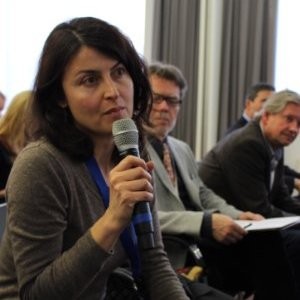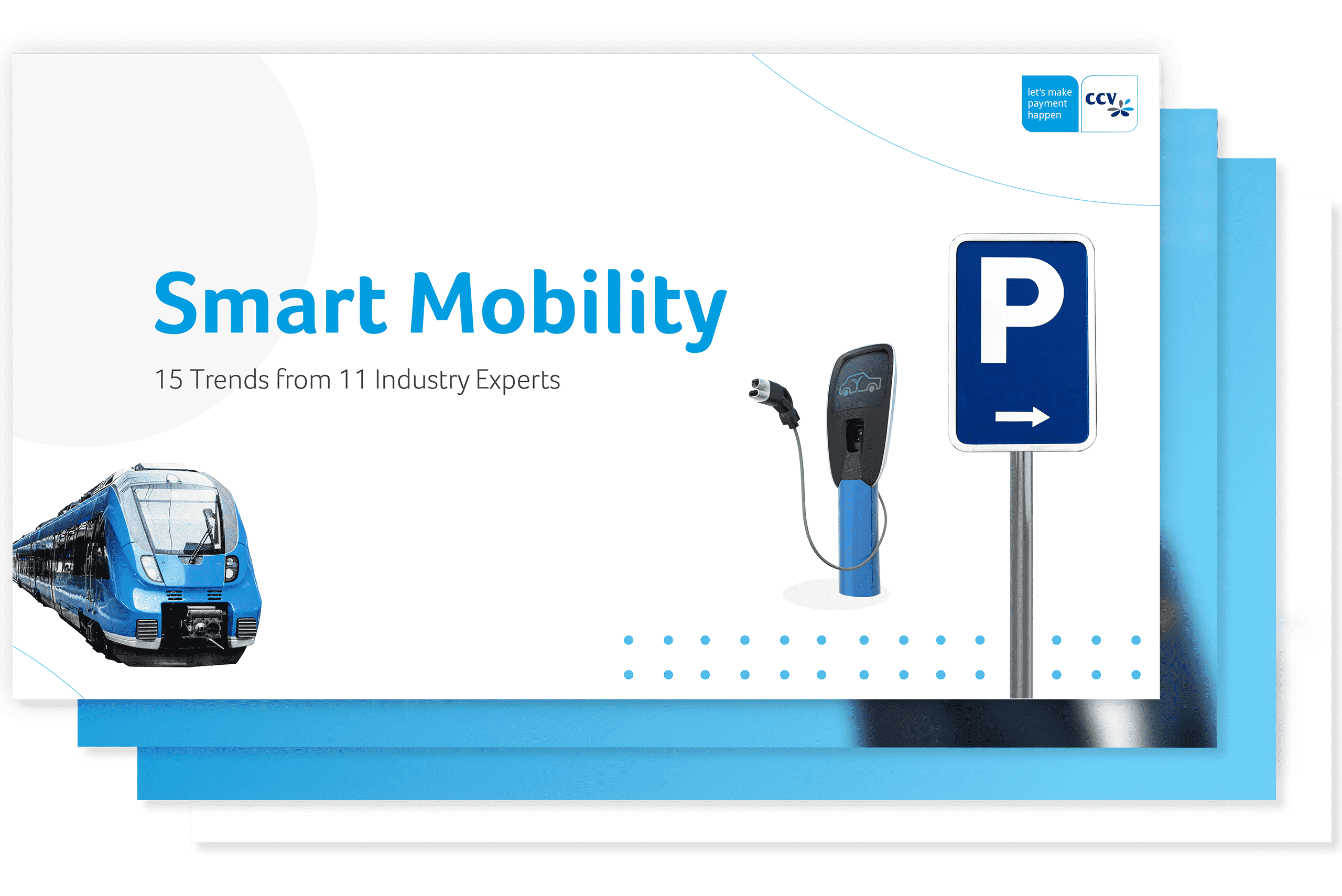CCV has been providing payment technology in the public transport sector for many years. As such, we always keep a keen eye on the evolution of public transport in our towns, cities, and rural areas. In the spirit of learning and sharing knowledge, we’ve been interviewing industry experts and publishing their insights on this blog.

This time, we’re lucky enough to speak with Aida Abdulah. Aida is Senior Project Manager within the Knowledge and Innovation Department at UITP – the International Association of Public Transport. She has over a decade of experience in project management for sustainable urban mobility, or in other words: clean public transport.
Aida Abdulah is responsible for ZeEUS and ASSURED, which are both EU projects designed to set the pace for cleaner bus fleets. In her role, she helps address the challenges of fleet upscale, operational excellence, interoperability, and standardisation.
This is the first of two interviews with Aida. In this conversation, we focus on the development of cleaner and greener public transport. Next time, we discuss Mobility-as-a-Service (MaaS) and travel payments.
What drives the motivation for clean public transport?
Aida is dedicating her career to the pursuit of more sustainable public transport. With this in mind, what drives her passion for this subject – and how does she stay committed to this purpose on a daily basis?
My work is challenging and very interesting. It’s always exciting to be part of a sector that’s constantly developing, with the collective aim of moving people around our cities with ease. I’m especially interested in social sciences, the diffusion of innovation, behavioural change towards sustainable choices and clean technologies. What are the motivations behind these choices? This is fascinating to me…
… On a personal level, I am curious, communicative, extroverted, committed, and passionate about sustainability and public transport. This certainly helps when working at UITP!
Aida explains that UITP is focused on climate, and advocates the use of public transport to provide concrete results. In Aida’s view, the more people that are moved safely and comfortably on public transport, the less cars are on the road. This helps tackle the negative effects of over-urbanisation – because building cities for people based on well-designed public transport increases people’s choices against individual transport modes.
With today’s technologies on offer, we can and should be bringing people from door-to-door with public transport and its natural neighbours: walking and cycling!
The future of clean public transport
As our cities change and our lives become more integrated with digital technology, the future of public transport is uncertain and exciting. In our recent conversation with Giuliano Mingardo, we uncovered interesting perspectives about the role of Mobility-as-a-Service (MaaS), self-driving vehicles, and parking.
But how does Aida see the development of public transport in our urban areas?
In my opinion, the biggest challenges that lie ahead for our cities are climate change, urbanisation, and an aging population. In the first place, we need to develop the public transport sector so it can be recognised as a great solution to climate change. We need to strive for a public transport able to reduce even more its carbon footprint, to comfortably move a high volume of passengers, whilst meeting the needs of people with reduced mobility and/or cognitive impairments.
Aida envisions lively and thriving cities, where people can choose whatever public transport mode they need to get from A to B. With an increased demand for sustainable travel, operators will need to combine the modern, safe, comfortable and affordable experience with an environmentally-friendly solution.
In the future, I believe public transport will meet people’s travel needs by offering clean, convenient, and efficient transport in all its modes – including shared mobility and other services we haven’t thought about yet. Clean propulsion systems (ideally zero-emission powertrains), automation, MaaS, and digitalisation will play a big role in that future…
…From the end-user perspective, public transport will be perceived by the passengers as THE way to travel in cities and even beyond – being able to replace private cars with excellent services at affordable prices, also in less densely populated areas.
For Aida, e-mobility in public transport is an essential component of fighting global climate change. But there are also more local benefits to zero-emission vehicles in our cities…
We’ll have better air quality and reduced noise levels, which also enhances the passenger experience – due to less vibrations, odours, and engine noise. Also, we’ll create better working conditions for and positive impact on the health of drivers and mechanics, with less exposure to vibrations, harmful substances, and exhaust emissions. In the future, we’ll be able to show the direct statistical impact of electric buses (and other e-modes) in passenger ridership numbers.
The obstacles for e-mobility in public transport
Shifting to a world of zero-emission public transport is necessary, but not easy. Typically, the challenges for electric transport are framed around charging infrastructure.
This has been addressed in an ad-hoc format for individual electric cars, by a mixture of public authority installations and private sector commercial charging points. Aida argues that public transport is on a different scale, because medium-to-heavy duty vehicles can’t simply be plugged into the mains, or dotted around our cities. Large vehicles, big batteries and high energy needs make charging difficult, but according to Aida this obstacle is gradually being overcome.
The last years have seen a tremendous amount of development in this field. Policies on decarbonisation and clean bus technologies are driving the market and our cities towards clean buses. When it comes to the implementation of electric fleets in public transport, we face a change of paradigm – from vehicle procurement to system procurement. This includes the vehicle, the charging infrastructure, and the services & operation of the fleet.
For many years, UITP has been leading projects to further promote the use of clean bus technologies in EU public transport. Just some of these initiatives include ZeEUS, EBSF2, ELIPTIC, e-LOBSTER, JIVE/JIVE2, and ASSURED. These projects have provided crucial insights, and ZeEUS in particular identified five main challenges in the deployment of e-buses in urban areas. According to Aida, these include:
- High upfront costs due to the associated charging infrastructure required
- More challenging operation, taking into account the system as a whole
- Vehicle and equipment procurement – tendering entire systems rather than one vehicle
- Standardisation and interoperability of charging infrastructure
- Cooperation with the energy sector to ensure easy implementation and price stability
Aida also highlights the fact that international collaboration is essential.
UITP is the only worldwide network bringing together all public transport stakeholders and all sustainable modes of transport. This allows us to put the relevant stakeholders around the same table to tackle these challenges and bring e-mobility forward.
Great examples to follow
UITP is certainly a flag-bearing organisation, advancing the cause of zero-emission public transport around the world. Bearing in mind the obstacles we’ve already mentioned, does Aida have any examples of environmentally public transport stories in major cities?
I think the ultimate goal of public transport and urban mobility should be to create healthy, liveable cities for all people. As such, integrating people’s health into the planning and decision-making process is best practice that should come as default. Unfortunately, this is far from reality at the moment. But I’d like to mention a couple of examples which I consider the best practices right now…
She continues.
Helsinki’s land use, housing and transport plan (called MAL) is a great example. The Helsinki Transport Authority (HSL), works closely with the land use and housing authorities. This has helped create a harmonised plan which focuses on citizens’ health. The Helsinki method underlines the need to assess the impact of decisions and actions, and to integrate the results in planning and decision-making. Authorities need to anticipate the potential health impact of new mobility actions or services.
Another success story is located on the other side of the world, in Southeast Asia.
In Singapore, the Land Transport Master Plan 2040 (LTMP) is a good summary of what I’ve said so far. The plan envisions a transport system which is convenient, well-connected, and fast. It is characterised by a commuter experience that is gracious and inclusive, contributing to better health and a safer journey for all – in the short-term and long-term.
According to Aida, the successes aren’t limited to these two famous cities. In fact, many other urban authorities are doing great work on environmentally-friendly public transport. In the EU, Barcelona, Stockholm, and Calgary have taken huge strides with electric buses, hybrid buses, and trolleybuses.
And lots of innovation is also happening in Argentina, Chile, and Colombia – very welcome news ahead of the UN Climate Change Conference in Santiago. Europe is also making great inroads when it comes to technological advancements. Innovation can be found across the board; all around the world, and it’s up to those cities and operators and authorities who are finding success to work with associations such as UITP to inform others on what they have learnt! In China, there’s many manufacturers leading the way with production of electric buses at a very fast rate. There is a lot happening at the moment, and I encourage everyone to check out the story in their own local area.
Upcoming projects and events
There are plenty of projects to follow and events to attend if you’re interested in the topic of clean public transport. Aida shines a light on one upcoming initiative in particular.
A new project called APOLLO EU is very exciting. APOLLO EU is an initiative of the EC under the umbrella of the Clean Bus Deployment Initiative coordinated by UITP. We will create a City Stakeholders Platform to enable knowledge and expertise exchange – and provide technical support on Clean Bus Deployment to cities in EU Member States. We include battery electric, fuel cell, CNG, battery trolleys (including IMC), and plug-in hybrids in the mix. This project will provide administrative capacity and technical knowhow to a selected set of city administrations, public authorities, and operators.
Thanks to Aida Abdulah for her contribution to this article. You can connect with her on LinkedIn, and read more about her work on the UITP website.
CLICK HERE TO READ OUR SECOND INTERVIEW WITH AIDA
Mobility Trends
We’ve interviewed 9 industry experts, so you can learn more about the biggest mobility trends right now. Download your free slideshow report today
Do you want to know more about our end-to-end payment solutions in parking? Please contact my colleague, Lorena Dias Lopes, International Partner Manager at CCV on l.diaslopes@ccv.eu or call +31622769394.
About the author
Simon Wood is a payment specialist with over 10 years of experience in the mobility sector. He’s part of CCV’s unattended payment team, working with a range of the industry’s parking, vending, EV charging, fuel, and public transport payment solution providers. Actively involved in the UK launch of mobile phone parking payment, and working with suppliers to the largest European parking hardware manufacturers, Simon is well placed to understand the requirements of this quickly evolving sector. Simon is based in Salisbury, UK.
Feel free to share this interview on social media:

